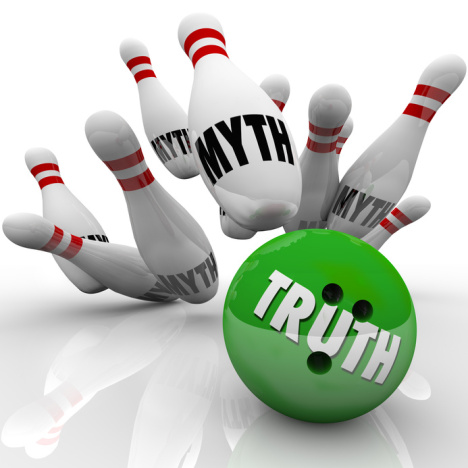
Common patent myths
© 2008, Dawsey Co., LPA
October 2008
Introduction
The intellectual property world of patents is filled with misinformation which can be confusing for the lay-person. The following is a list of common patent myths.
Patent Myth No. 1 – Once my invention is patented, the patent office will prevent others from infringing my patent.
The patent office does not enforce patent rights. The patent holder has the responsibility of enforcing their patent by bringing an infringement action against the infringer.
Patent Myth No. 2 – If I get a patent in the United States, my patent rights are enforceable world wide.
The powers and rights of United States patents are limited to the United States. As a result they are not enforceable outside of the United States and its territories. An inventor must file for a patent in every country they wish to protect their invention in; otherwise, people in other countries can make, use, and sell the invention. However, a United States patent gives the owner the right to prevent others from importing infringing products, from other countries, into the United States.
Patent Myth No. 3 – It does not make sense for me to get a patent because I have no competitors.
You may not currently have competitors for your product, but rest assured, if your product has any commercial value, competitors will arise. By securing a patent on your invention, you have a right to prevent others from making, using or selling a product that would infringe your invention.
Patent Myth No. 4 – All patents have value.
A patent is only as valuable as the invention the patent covers! In other words, if an invention has a low potential of creating an income stream, the patent has little value. Remember, patents can only be used to exclude others from making, using, or selling the invention as covered by the patent’s claims.
Patent Myth No. 5 – A patent protects anything illustrated in the patent’s drawings.
Don’t fall for this myth. A patent’s protection is limited to the exact language of the “claims” of the patent. Drawings are used to give illustrated examples of an invention; the claims, however, may cover more, or sometimes less, than what is illustrated. The correct interpretation of claims and what they cover can be very difficult.
Patent Myth No. 6 – I can get a patent on my idea.
This is a very common myth, but ideas and concepts are not patentable. In order to obtain a patent there must be more than mere conception of an invention. In fact, an inventor must also reduce the invention to practice through actual reduction to practice or through constructive reduction to practice. These are all difficult concepts, but basically boil down to the fact that to be patentable, an invention must either already be built, or could be built by someone who knew the technology. Something that is only an “idea” is not far enough along in development to be patented.
Patent Myth No. 7 – Anything I find disclosed in an expired patent can be re-patented.
Once a patent expires, the invention cannot be re-patented. The United States Constitution Article 1, Clause 8 states “Congress shall have the power… to promote the progress of science and useful arts, by securing for limited times to authors and inventors the exclusive right to their respective writings and discoveries.” Science and useful arts are advanced by putting inventions into the public knowledge. As a result, the founding fathers established a limited monopoly to inventors in return for disclosing their inventions. Once that limited monopoly expires, the public has the right to the invention forever. However, many patents are granted for combinations of things that are found in previous patents, so the appearance of a feature in an expired patent is not a clear indication of public ownership.
Patent Myth No. 8 – If I get a patent, then I alone have the right to make, use and sell my invention.
This is not necessarily true. A patent only covers what the “claims” of the patent say that it covers. If another person holds a broader and prior patent which covers your invention, they may prevent you from making, using or selling your own patented invention.
Patent Myth No. 9 – The preferred starting point to obtaining a patent is submitting a provisional patent application.
In fact, the normal path to securing a patent is applying for a non-provisional patent. A provisional application usually increases the overall cost of obtaining a patent. The cost is often better spent in having a good patent search and opinion performed before filing.
Patent Myth No. 10 – My company only uses old technology so I don’t have to worry about patents.
What one believes to be “old technology” may still infringe a patent.
Patent Myth No. 11 – I never copy others’ products therefore I don’t infringe any patents.
A patent can be infringed without knowledge of the patent or of the patented product. One does not have to prove knowledge or copying to succeed in a patent infringement action.
Patent Myth No. 12 – Most of my products are just improvements on existing technology so patents are not available to me.
You do not need a major breakthrough to obtain a patent. In fact, most patented inventions are improvements on existing technology.
Conclusion
Many patent myths circulate within society, being retold and reinforced in the minds of those that hear them. Remember a patent is only as valuable as the invention that it covers and it is the patent holder’s duty to enforce their patent. Additionally, a patent only gives the right to prevent others in the United States and its territories from making, using or distributing an invention covered by the patent. Furthermore, once a patent’s statutory period of enforcement has expired the invention goes into the public domain, it cannot be re-patented.
